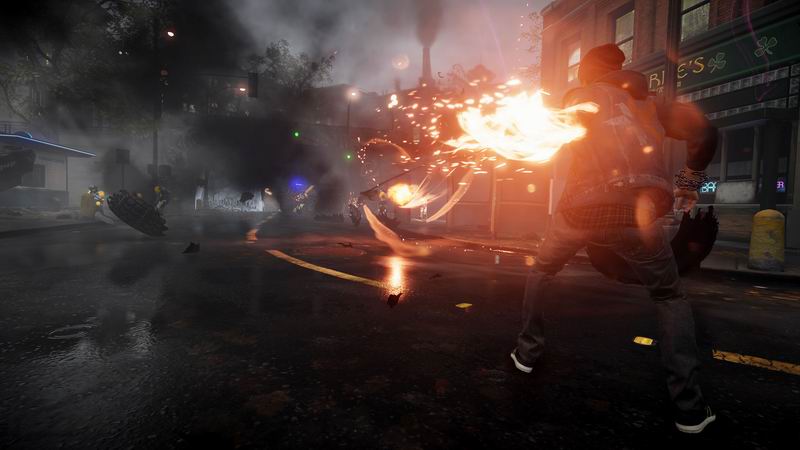Superheroes and videogames should be a match made in heaven – the primary colour characterisations; the non-stop action and combat; the backstories sketched on a napkin, but then gradually filled in over multiple issues; the superpowers, analogous to classic videogame "power-ups". It's strange then, that videogame superheroes have had such a tough time of it in general.
It's also strange to see this third edition in the series floundering so badly in the wake of two inventive and original games that flamboyantly and successfully mixed freeroaming city exploration and action reminiscent of the Grand Theft Auto series, with quality comicbook-rich storytelling, and inventive and enjoyable design of superhero powers.
 Delsin Rowe is the emo-brat replacement to the series' previous, older hero. Rowe realises he is a "Conduit", a superhero, or "bioterrorist" according to the government and even his own brother, when he touches an escaped Conduit.
Delsin Rowe is the emo-brat replacement to the series' previous, older hero. Rowe realises he is a "Conduit", a superhero, or "bioterrorist" according to the government and even his own brother, when he touches an escaped Conduit.
Rowe is perhaps the ultimate superhero in a world of superheroes – he can absorb others' powers by touch. When a comically nasty supervillain working for the government turns up to find Rowe and hurts his entire community, he has to track her down to Seattle to steal her powers and defeat her.
Along the way, Rowe absorbs a series of utterly generic powers tied to materials in the game world: smoke, neon, video and concrete. All of them have long-range shooty powers, missile powers, flying about powers etc. They're all pretty much interchangeable. Which makes the decision to include so few other Conduits and powers in the game more perplexing. You're the ultimate superhero who can absorb amazing powers, but the only powers you get to absorb are boring?
 The game stumbles further on mission design. The "boss" battles are constrained compared to the rest of the game's freedom – rendering them horribly out-of-place. And the side missions used to gradually power Rowe up are repetitive, dull and pointless. The end result is a grind.
The game stumbles further on mission design. The "boss" battles are constrained compared to the rest of the game's freedom – rendering them horribly out-of-place. And the side missions used to gradually power Rowe up are repetitive, dull and pointless. The end result is a grind.
Worst of all is the way the series' moral compass has been turned into a dificulty setting. In previous inFamous games, your actions gradually shifted the game's feel to you being more of a superhero or villain. Your powers shifted with this too. The game genuinely seemed a darker, angrier place as you became more evil, or a nicer place as you became good.
In Second Son, good and evil are more like two different difficulty settings. If you blast indiscriminately you're evil and it's easy, if you go for semi-obscured, non-lethal leg shots, then you're good and it's harder. Even missions now are choices between taking on armed drug dealers (good) or unarmed anti-Conduit protestors (evil) – where the morality isn't mentioned, it's just unarmed goons or armed goons. This is a pathetic reneging on a really interesting storytelling and gameplay mechanic.
It also renders the central storyline of plucky, cocky Rowe against the evil, fascistic government "D.U.P." forces ludicrous – there's no moral backbone to Rowe's moves whichever path you choose.
So what is good about Second Son? Its effortless and fluid motion across an amazingly detailed and realised city. It looks good, it moves well, its action is quick-fire and varied in style. The end result feels fun, but hollow fun.
- inFamous: Second Son is out now for PS4. Developed by Sucker Punch and published by Sony
- Read other gaming reviews on The Arts Desk
- Simon Munk on twitter















Add comment